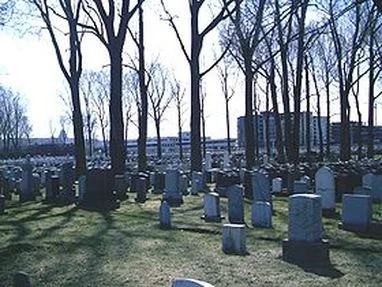Friday, Bloody Friday: David Paul Kuhn's The Hardhat Riot
Reviewed by Steven H. Jaffe
David Paul Kuhn’s The Hardhat Riot: Nixon, New York City, and the Dawn of the White Working-Class Revolution focuses on May 8, 1970, a symbolic date in the exodus of such voters from the “New Deal Coalition.” On that day hundreds of blue-collar workers — many of them construction workers building the World Trade Center — converged in the streets of lower Manhattan, chanting “U—S—A. All the Way!” as they physically attacked students protesting the Vietnam War. Over one hundred students, bystanders, and others were injured in the melee on the streets.
Read MoreReview: Martin V. Melosi's Fresh Kills: A History of Consuming and Discarding in New York City
Reviewed by Simone M. Müller
Fresh Kills Landfill was a human-made structure whose scale was gigantic in every conceivable dimension. With some 400 staff on site, holding twenty different job titles, the facility covered an area of about 3,000 acres, 2200 of which were available for fill. At the peak of its operation, in the late 1980s, Fresh Kills received about 29,000 tons of New York City’s municipal solid waste on a daily basis. Until its closure in 2001, Fresh Kills functioned as the world’s largest landfill in the heart of one of the world’s megacities.
Read MoreNieuw Amsterdam As Manhattan
By Harrison Diskin
In the summer of 1641, a Wiechquaskeck man murdered Claes Smits, an aged wheelwright who lived in a small house north of Fort Amsterdam. He had visited Smits’ house to exchange beaver skins for duffels of cloth. But as Smits bent over to grab the cloth from a chest, the Native man (the records have not preserved his name) struck him dead with an axe. The Commander of the Dutch garrison at Fort Amsterdam pursued the man back to his village and accosted him with questions.
Read MoreForbs, Fungi, and Fading Memories: What Can Preserving a Disappearing Staten Island a Century Ago Teach Us Today?
By Melissa Zavala
Staten Island’s rich history of conservation is overshadowed by its reputation as a “dump,” most often associated with Fresh Kills, the notorious landfill which at its peak point of operations in the 1980s was considered the largest landfill in the world. A look through the Staten Island Museum’s archival collections, however — its founder’s letters, journals, publications, photographs, and a wide array of other objects including herbariums, assorted wet and dry collections of specimens, and more — reveals an island that has transformed radically.
Read More“Down Here Near the End of Staten Island”:
Dorothy Day on the Beach and on the Page
By David Allen
In the Map Division of the New York Public Library on Fifth Avenue is a 1924 survey of New York conducted by the Fairchild Aerial Camera Corporation for the City’s Office of the Chief Engineer. If you look closely at plate 33C, you will see the section of Staten Island’s South Shore that stretches along Raritan Bay from Seguine Point to Arbutus Lake: a crescent of white beach, a few houses, trees, and fields offering a buffer from more developed neighborhoods closer to Amboy Road and the Huguenot Station of the Staten Island Railroad.
Read MoreWhere Suffrage Took Flight: Staten Island and the Woman Suffrage Movement
By Gabriella Leone
On May 20, 1913, nationally renowned suffragist, Rosalie Gardiner Jones, made a spectacular debut in Staten Island, where she became the first suffrage activist to fly for the cause. To achieve this feat, she met her pilot Harry Bingham Brown, one of Staten Island’s resident pilots, at the Grant City train station and boarded his plane. The New York Times reported, “Gen. Rosalie did not show a sign of fear as she took her seat in the biplane, seized a steel rod, the only thing to hold to, with her left hand, had her skirts tied down with a little piece of blue string, and, with a bunch of leaflets in her right hand, nodded a smiling good-bye to the crowd below.” Decorated with 'Votes for Women' banners, the plane arrived at its destination, roughly two miles away on the island’s eastern shore, in fifteen minutes. It landed at the Flying Carnival of the Staten Island Aeronautical Society in a flurry of yellow leaflets, which Jones had been scattering along the way.
Read More






